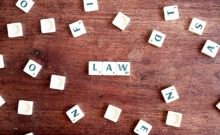We have a script we use when a celebrity does something absolutely scandalous. Parents, teachers, pastors, and community leaders are quick jump out and condemn the behavior because the celebrity is a role model.
The celebrity counters in an interview, saying something like, “I’m not a role model. If you consider me to be a role model, please stop.”
Other celebrities are praised for their actions, such as giving to charity or taking time to meet sick fans.
And, then there are those who paradoxically pinball back and forth between these two opposite positions, getting called one thing or another depending on the day.
Two questions stem out of this situation.
- Are the critics’ concerns justified?
- Does the celebrities’ defense work?
The answer to both questions lies in whether celebrities are role models or not, which itself depends on what a role model is.
This concept dates back to the sociologist Robert King Merton.1I realized while researching the name that I know it from a Sociology of Juvenile Delinquency class I took in college.2 You may not have heard of Merton, but you’ve probably heard of some of the ideas he developed or popularized, such as the role model, self-fulfilling prophecy, unintended consequences, or even some of the more obscure, such as the reference group and role strain.
Something we’ve lost sight of today is that the role model doesn’t exist in a vacuum. It’s isn’t a universal truth and it is dependent on other ideas. When we try to understand it on its own we lose sight of why it is supposed to work in the first place.
Let’s start at the top with the reference group. A reference group is “the group to which individuals compare themselves, which is not necessarily a group to which those individuals belong.” In practice, this is usually a group to which someone wishes to belong. For instance, a kid might want to be a professional basketball player, and thus their reference group could be said to be professional basketball players. Role models are drawn from the reference group by those who wish to join it, and those who wish to join model their lives after the model.
Which leads us to our first interesting conclusion about role models. The groups we often call role models, such as parents, teachers, religious figures, and community leaders, are only role models if they fall within a reference group.
I would guess that on average the groups listed above are less likely to be part of a child’s reference group relative to reference groups based on jobs with more prestige and compensation. Likewise, these groups are larger than the groups with more prestige and compensation, which means that even if a child does want to become, for example, a teacher, the odds of an individual teacher being part of a reference group are lower, because there are so many teachers.
Unless of course, we advance the argument that the reference group includes all possible members. This seems unlikely. Most children seem to fixate on one or a small number of individuals in the reference group.
That wasn’t all that Merton had to say about role models. He “emphasized that, rather than assuming one status and one role, a person has a status set in the social structure to which is attached a whole role-set of expected behavior.”
Wow. That was a loaded sentence.
Leaving aside for the moment the notion that the concept of a role model lives or dies by the truthfulness of the above statement, we do learn something significant about the nature of roles.
Namely, that the role precedes the person in it. Merton has something of a “drag-and-drop” approach to roles, in that they exist independently of the person doing it, and they have attributes assigned to them even if vacant. By taking on the role, a person also takes on the attributes, whether they want to or not.
The flip-side of this coin is that not all attributes someone has are associated with the role. There might be a spate of domestic violence in the NFL, but that doesn’t mean that domestic violence is an attribute of the role of football player.
I’m not letting celebrities off the hook. They should behave morally, just as anyone else should.
But, I believe that even children understand that there is a difference between the jobs that people work and the moral decisions that they make. To put it back into Merton’s language, I would say that the attributes conferred by the role differ from those brought to the table by the person in the role.
If true, this blunts a lot of the criticism levied at celebrities. They should still be moral, but not because they’re famous and children are watching.
There’s a bigger question we need to ask though: was Merton right?
Is it true that “a person has a status set in the social structure to which is attached a whole role-set of expected behavior?”
The question that Merton seems to be answering with this answer is “why do we see similar practices from people in the same role?” In other words, his answer is that the role comes with preexisting attributes or expectations.
I don’t know that this is true.
Instead, I think that similar jobs have similar obstacles that stand between a person and successful completion of the job.
Since most professionals have standardized training in this day and age, their approach to the problems is going to be similar. Likewise, most problems have a limited number of practical solutions, meaning that standardization is going to appear even when it didn’t exist at the outset.
This doesn’t disprove Merton, but it does provide an alternate explanation of the facts that starts at the individual and works its way up, instead of starting with the collective and working its way back down.
If you find yourself uncomfortable with explanations of human behavior that start with the collective, then you should be a bit disconcerted with the idea of a role model, despite its ubiquity in society today.



